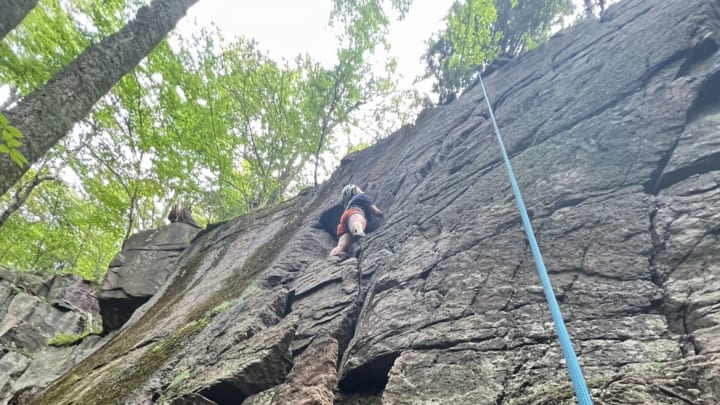Adaptive Climbing: Breaking Barriers With Shea Black

Shea Black, the oldest of four children, was born into a traditional family in Northern New York. Her parents, Doug and Jennifer Black, ingrained the concept of hard work into their children early on. Growing up with this mindset, Shea learned how to work hard, persevere, and succeed.
For Shea, being born with one hand was not a setback. She became a strong student athlete who played soccer, basketball, and lacrosse for her high school. While she needed to adapt in ways her teammates did not, her natural athletic ability was evident.
In 2022, Shea took her athletic adeptness to the next level. Alongside her partner, Shea drove to her local crag and put on a climbing harness for the first time. "When I try new activities designed for people with two hands, I try to go in with low expectations so I don't get too discouraged," Shea stated. "It's not that I'm thinking, 'I can't do this,' I just know it might take me longer to get good at at."
With her partner's guidance, Shea tied into the climbing rope and peered up at the vertical rock. After performing safety checks and belay commands, Shea took a step toward the wall and began climbing.
"Because of the shape of my nub, there are holds that I can't use that two-handed people can, but there are also holds that I can use that other people can't." Shea explained that she tends to be successful with crack climbing as she can utilize the shape of her nub, wedging it solidly in the cracks.
Shea has worked toward finding a belay system that is both comfortable for her and effective. Initially, she used a Black Diamond ATC-XP belay device. After experiencing difficulty belaying with the XP, she tried the Black Diamond ATC Pilot. She has found this device to be more fitting, but intends on trying a GriGri in the near future.
Shea stated that the biggest obstacle she encountered with belaying is keeping the brake strand secured. For two-handed individuals, the P.B.U.S. (Pull, Brake, Under, Slide) method is the preferred motion for belaying. Shea adapted this method to become P.B.S.S. (Pull, Brake, Step, Slide). In doing so, she uses her foot for the brake, rather than having a second hand holding the brake strand.
"Because I have to use my foot to brake, I'm still working on gaining confidence with belaying and achieving flow," she explained. "I want to get to a point where my climbing partner feels more comfortable in my ability to belay them safely." For the novice climber, belaying can be a nerve-racking learning curve. With practice and patience, Shea has grown as a climber and belayer.
Since Shea's first day at the crag, she has continued venturing into the mountains for rock climbing, hiking, and paddling. She has climbed several of the 46 High Peaks and enjoys paddling down Adirondack rivers.
Shea's drive to learn and adapt serves her well in the backcountry. Whether she is scaling a cliff, hiking to a summit, or kayaking through moving water, the perseverance she developed as a child has carried over into her newfound love for adventure.
